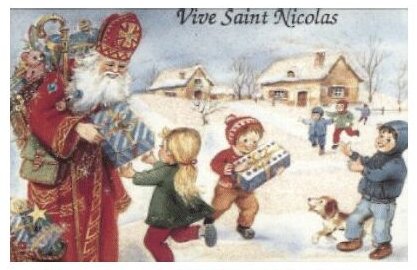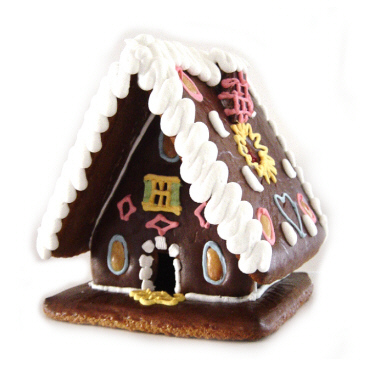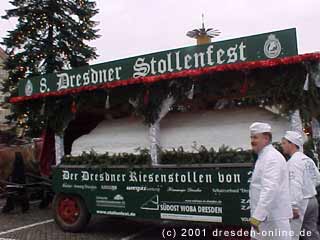
| ~ How
do you say Merry Christmas in Germany ? "Frohe
Weihnachten" ~
According
to legend, on Christmas Eve in Germany rivers turn
to wine, animals speak to each other, tree blossoms
bear fruit, mountains open up to reveal precious
gems, and church bells can be heard ringing from
the bottom of the sea. Of course, only the pure in
heart can witness this Christmas magic. All others
must content themselves with traditional German celebrating,
of which there is plenty. As a matter of fact, there
is so much celebrating that is has to begin on December
6th, St. Nicholas Day.
|

As in many other European countries, on the eve of
Dec. 6th children place a shoe or boot by the fireplace.
During the night, St. Nicholas, the patron saint of
children, hops from house to house carrying a book
of sins in which all of the misdeeds of the children
are written. If they have been good, he fills the shoe
or boot with delicious holiday edibles. If they have
not been good, their shoe is filled with twigs.
December 21st, supposedly
the shortest day (longest night) of the year, is
dubbed St. Thomas Day. In parts
of the Sauerland, whoever wakes up late or arrives
late to work on that day is issued the title "Thomas
Donkey." They are given a cardboard donkey and
are the subject of numerous jokes throughout the day.
But this gentle abuse ends deliciously with round,
iced currant buns called "Thomasplitzchen."
|

This is all preliminary to the excitement of Christmas
Eve. Prior to the evening feast, is the presentation
of the tree. The Christmas tree, as we know it, originated
in Germany. It has a mysterious magic for the young
because they are not allowed to see it until Christmas
Eve. While the children are occupied with another
room (usually by Father) Mother brings out the Christmas
tree and decorates it with apples, candy, nuts, cookies,
cars, trains, angels, tinsel, family treasures and
candles or lights. The presents are placed under
the tree. Somewhere, close to the bright display
are laid brilliantly decorated plates for each family
member, loaded with fruits, nuts, marzipan, chocolate
and biscuits. When all is ready a bell is rung as
a signal for the children to enter this Christmas
fantasy room. Carols are sung, sometimes sparklers
are lit, the Christmas story is read and gifts are
opened.
|
As you wander through the many traditional Christmas
markets, discover a piece of German hospilitality.
Sniff the aroma of freshly roasted almonds and gingerbread
spices. Warm your hands and your heart with a hearty
swig of mulled wine and let yourself be enchanted
by the sound of christmas trumpets and choirs.
In Germany, Christmas
is symbolized by the famous stollen, a traditional
holiday bread that derives
from a tradition more than 500 years old. Stollen
are traditionally made from the end of September
until the end of December. They are a breakfast
fruit bread, filled with marzipan, served either
hot or cold. The pleasure of stollen is even greater
the second day at breakfast explains Bernd Kütscher,
when you bite into a toasted slice, slathered with
butter! There are numerous varieties of stollen,
including one that looks like a large filled crêpe.
In fact, it's a cake studded with rum-soaked candied
fruits, filled with almond cream and folded over
to enclose the filling. This particular variety
symbolizes the baby Jesus wrapped in his swaddling
clothes. If you ask bakers in Dresden for their
recipe, they won't tell you. What they will say
is that you'll need the finest candied fruits and
nuts, the freshest eggs and butter for this holiday
sweet bread.
|

At Christmas many German
town centers have street markets with stalls selling
cookies, arts and crafts,
wooden toys and other festive items. Almost every street
corner seems to boast Bratwurst and Glühwein stalls.
It's amazing how revived one can feel after a small
glass of warm, spicy red wine. This is a basic recipe,
but in Germany, stalls will offer you additional flavorings
such as elderberry cordial or a shot of dark rum. Heat
your Glühwein in a large saucepan on the stove
or in a large jug in the microwave, but don't let it
boil or the alcohol will evaporate.
|

|
|